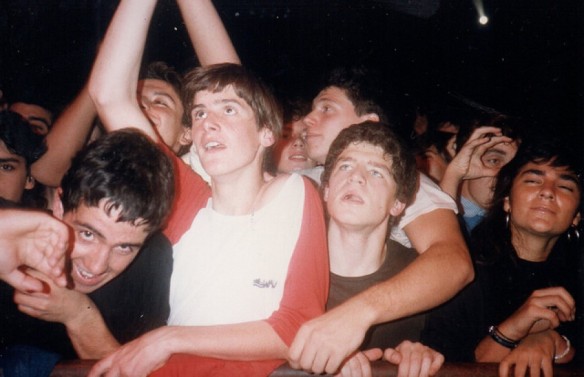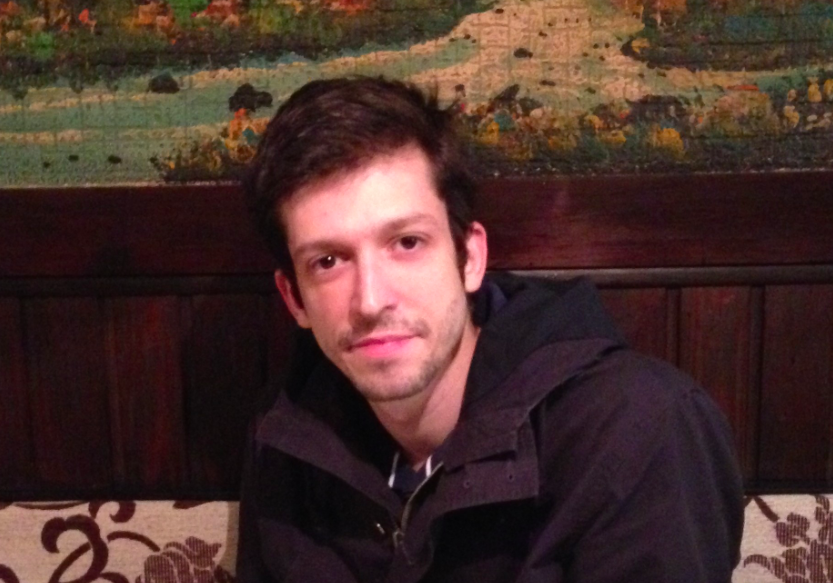Search
To search for an exact match, type the word or phrase you want in quotation marks.
A*DESK has been offering since 2002 contents about criticism and contemporary art. A*DESK has become consolidated thanks to all those who have believed in the project, all those who have followed us, debating, participating and collaborating. Many people have collaborated with A*DESK, and continue to do so. Their efforts, knowledge and belief in the project are what make it grow internationally. At A*DESK we have also generated work for over one hundred professionals in culture, from small collaborations with reviews and classes, to more prolonged and intense collaborations.
At A*DESK we believe in the need for free and universal access to culture and knowledge. We want to carry on being independent, remaining open to more ideas and opinions. If you believe in A*DESK, we need your backing to be able to continue. You can now participate in the project by supporting it. You can choose how much you want to contribute to the project.
You can decide how much you want to bring to the project.

‘I wanted to remove these works from the placard’, announced Roberto Jacoby at the press conference to Traidores los días que huyeron (Treacherous Were the Days That Fled), an alternative anthology of his work from the fifties to the present, curated by Santiago Villanueva and Fernando Farina for the Museo de Arte Contemporáneo in Rosario. The placard is a literal reference to a piece of furniture in Jacoby’s house, where almost all the material now on display was kept in boxes: drawings, sketches, typewritten texts, poems and photographs taken with a pocket camera some time in the eighties from the stage on which where the legendary group Virus officiated before its audiences. Jacoby promoted this group, wrote their lyrics and was also fifth columnist.
The show presents Jacoby in a parallel world — not the Jacoby who embarked on the dematerialisation of art in the short time lapse between the 1966 manifesto ‘Un arte de los medios de comunicación’ (An Art of the Media) to Tucumán Arde! (Tucumán Burns) two years later, but a Jacoby of archives, placards, whose inconspicuous early period as a representational and abstract artist gave way to a series of activities and projects that almost coincided with the elder sister of this anthology, El deseo nace del derrumbe (Desire Is Born from Collapse), an earlier exhibition curated by Ana Longoni at Reina Sofía museum in Madrid. In some ways, this 2018 display updates the previous show, presenting recent works such as the Fotos 2016 (Photos 2016) series, a set of black-and-white portraits in which Jacoby makes different faces ranging from expressions of sadness to consternation, and from depression to fury. The photos prefigure a present-day comment: seeing so many strange faces, it’s easy to imagine the facial reactions of a newspaper reader immersed in the analysis of Argentinean politics and economics, as trivial as they are catastrophic.
Traidores los días que huyeron presents what Jacoby himself called the B-sides of his production and what the curators define in the wall texts as his ‘free-time work’, never shown before. Yet Jacoby is the same artist who in a recent interview with Francisco Garamona declared that ‘in art, we must do things that are necessary’. In more general terms, he is also the same artist who pioneered the concept of art as social production and who, along with Raúl Escari and Eduardo Costa in the 1966 manifesto ‘Un arte de los medios de comunicación’, drew up a programme that a few years later would become the basic premise of north Atlantic institutional art criticism: that there no such thing as a pure art, released from its own social relations. If art derives from the social reality of its own access apparatus, what room is there for this ‘free-time work? It’s strange for a Marxist intellectual like Jacoby to end up with an amateurish idea of art. Luckily, this isn’t the case.
The answer to the riddle is provided by the photographs of the audience at a recital by Virus. More than to music, the Jacoby Musical concert hall (complemented by two records produced by Nacho Marciano) is devoted to the idea of art as active contact. The photos of the audience at the Virus performance portray an aspect of the young cultural scene that in the mid-eighties was moving steadily forward after the recovery of democracy. These photos, records that are completely removed from the institutional apparatus of art, are also expressions of the programmatic idea of art as production and effervescence of the social fluid in its euphoric, rebellious, pleasant and youthful aspects, acting as the reverse of the sad 2016 monochrome self-portraits which are also inextricable from their political reality.
Even though the exhibition title evokes the literary motif of the brevity of life, Traidores los días que huyeron has more nuances of speed than of nostalgia, more aspects of an immediate inspiration concerning social matter than of a recovery of personal archives. The plural or versatile artist, as he is usually called, a hybrid between an intellectual, a singer-songwriter and a clown, draws the tribe together around his own experience of diaspora.

Claudio Iglesias is an art critic based in Buenos Aires. His latest books are Corazón y realidad (Consonni, Bilbao, 2018) and Genios pobres (Mansalva, Buenos Aires, 2018).
"A desk is a dangerous place from which to watch the world" (John Le Carré)